With the revolutions in e-skin to mimic and transcend the capabilities of the human skin, inspiration from the ant and spider has lead to the creation of a newly integrated type of skin. It incorporates the following four capabilities a tribo-electric layer composed of collagen aggre-gate nanofibers,multiwalled carbon nanotubes, and triboelectric […]
Rapid advances in flexible and wearable smart textiles demand low-cost, high-energy/power-density fiber-shaped supercapacitors (FSCs). The performance of FSCs is determined by the fabrication and assembly of fiber-shaped electrodes (FSEs), where an active charge-storage material is always clad around flexible charge transmission current collectors. Inspired by the tissue structure of natural bamboo, wherein parenchyma cells (PCs) […]
Abstract: Medical adhesives that are strong, easy to apply and biocompatible are promising alternatives to sutures and staples in a large variety of surgical and clinical procedures. Despite progress in the development and regulatory approval of adhesives for use in the clinic, adhesion […]
This paper presents the re-creation of the bell deformation cycle of the Aequorea victoria jellyfish. It focuses on the design, fabrication, and characterization of the bio-inspired bell kinematics of an IPMC actuated robotic jellyfish. The shape and bell kinematics of this underwater vehicle are based on the Aequorea victoria jellyfish. This medusa is chosen as […]
This article gives insight into how researchers in different countries use bio-inspired robots in order to study animal behavior in their natural environment. For example, scientists from the US created a robot (B2) inspired by bats and their flight mechanism. B2 can do fast diving maneuvers and banking turns, and in […]
“Inspired by the functional microstructure of the ant nest, a humidity control material was prepared by the sintering of modified low-grade sepiolite. A hierarchical porous structure accelerates the diffusion of water vapor. Meanwhile, CaCl2 was applied subtly to enhance absorption/desorption of water vapor […]
Researchers at the Massachusetts Institute of Technology (MIT) in collaboration with RWTH Aachen University (Aachen, Germany) have developed a concentrated solar power (CSP) design that reduces the amount of land required to build a CSP plant, while increasing the amount of sunlight its mirrors collect. By rearranging the mirrors, or heliostats, […]
Taking inspiration from squid skin, researchers have invented an adaptive composite material that can insulate beverage cups, restaurant to-go bags, parcel boxes, and even shipping containers.
Learn more (opens external site)
Bat robots, peregrine falcon robots, rat robots, falcon robots, guppy robots, cockroach robots, and even bee and fish robots are being utilized across the world to examine how animals move and behave. This collection of bio-inspired robots are tasked with going undercover to get an up close and personal look at […]
Manmade oyster reefs
Climate change is one of the most pressing issues of our times, one of the main consequences being rising sea levels. Beyond putting human civilization at risk, rising sea levels have heavily contributed to the near extinction of oyster-reefs. In fact, oyster-reef abundance has already declined ∼85% globally over the past […]
News, Biomimetic dental prosthesis
Material researchers are developing a procedure that allows them to mimic the complex fine structure of biological composite materials, such as teeth or seashells. They can thus create synthetic materials that are as hard and tough as their natural counterparts.
Learn more (opens external site)
To move efficiently, animals must continuously work out their x,y,z positions with respect to real-world objects, and many animals have a pair of eyes to achieve this. How photoreceptors actively sample the eyes’ optical image disparity is not understood because this fundamental information-limiting step has not been investigated in vivo over the eyes’ whole sampling […]
Drawing inspiration from cephalopod skin, engineers at the University of California, Irvine invented an adaptive composite material that can insulate beverage cups, restaurant to-go bags, parcel boxes and even shipping containers.
Learn more (opens external site)
Designers of legged robots are challenged with creating mechanisms that allow energy-efficient locomotion with robust and minimalistic control. Sources of high energy costs in legged robots include the rapid loading and high forces required to support the robot’s mass during stance and the rapid cycling of the […]
A team of scientists has constructed a robot leg that, like its natural model, is very energy efficient. BirdBot benefits from a foot-leg coupling through a network of muscles and tendons that extends across multiple joints. In this way, BirdBot needs fewer motors than previous legged robots and could, theoretically, scale […]
This article gives insight into how researchers in different countries use bio-inspired robots in order to study animal behavior in their natural environment. For example, scientists from the US created a robot (B2) inspired by bats and their flight mechanism. B2 can do fast diving maneuvers and […]
It is generally agreed that sperms ‘swim’ by beating or rotating their soft tails. However, a research team has discovered that ray sperms move by rotating both the tail and the head. The team further investigated the motion pattern and demonstrated it with a robot. Their study has expanded the knowledge […]
This paper combines experiments, simulations and analytical modeling that are inspired by the stress reductions associated with the functionally graded structures of the dentin–enamel-junctions (DEJs) in natural teeth. Unlike conventional crown structures in which ceramic crowns are bonded to the bottom layer with an adhesive layer, real teeth do not have a distinct “adhesive layer” […]
Researchers at MIT say they have developed a tiny sensor-carrying device that can be blown by the wind as it tumbles toward the ground, offering potential for wireless sensors that can monitor how temperature, humidity or other environmental conditions vary across large swaths of land, such as farms or forests.
Researchers at Max Planck Institute for Intelligent Systems have modelled an improved highly energy efficient robot leg for their Birdbot robot based on the structures of legs from ostriches, which share the same features and mechanisms as the legs of the Tyrannosaurus Rex 66 millions years ago. This structure of the […]
Researchers created a 3D-printable mask design modeled after animal noses that are more breathable. They mimicked the winding pathways that air takes in animal noses, which not only increases the surface area over which pathogens can be filtered out, but also prevents a drop in air pressure, which makes the masks […]
Paper, Projection-based 3D Bioprinting
“Projection-based 3D bioprinting can be summarized as a surface-to-entity forming method. As the printing process begins, the platform firstly goes down and submerges under the liquid material surface, leaving a thin gap between the tank bottoms. This gap, when filled with materials, has the same thickness with each digital slice. Then, […]
Thanks to its feathery fluff, a dandelion seed riding the wind can cover more than half a mile. While disheartening for many gardeners, this marvel of passive travel was an inspiration for scientists at the University of Washington. The UW researchers have created tiny devices that are dispersed with the breeze, […]
Investigating the complex and highly ordered mineralized skeletal system of the knobby starfish, a team of U.S. National Science Foundation discovered an unexpected combination of characteristics that may lead to developing an entirely new class of high-performance lightweight ceramic composites.
The team examined ossicles, calcareous skeletal […]
Noncoding RNA molecules called Piwi-interacting RNA (piRNA) normally suppress gene activity in humans. Geneticists are using piRNAs in nematode worms for gene silencing to allow biomedical research and drug development to advance. They created a 21-letter RNA sequence and combined it with natural piRNA machinery and silenced certain genes. They were […]
Synthetic regulatory networks with prescribed functions are engineered by assembling a reduced set of functional elements. We could also assemble them computationally if the mathematical models of those functional elements were predictive enough in different genetic contexts. Only after achieving this will we have libraries of models of biological parts able […]
Conventional wide-field-of-view cameras consist of multi-lens optics and flat image sensor arrays, which makes them bulky and heavy. As a result, they are poorly suited to advanced mobile applications such as drones and autonomous vehicles. In nature, the eyes of aquatic animals consist […]
Bio-inspired intelligence is in the spotlight in the field of international artificial intelligence, and unmanned combat aerial vehicle (UCAV), owing to its potential to perform dangerous, repetitive tasks in remote and hazardous, is very promising for the technological leadership of the nation and essential for improving the […]
Festo, a global supplier of automation equipment, has unveiled three new lightweight robotic concepts which take inspiration from elephants, octopuses and the human arm.
Learn more (opens external site)
Fire ants survive floods by forming rafts made up of thousands of wriggling insects. A new study by engineers at CU Boulder lays out the simple physics-based rules that govern how these ant rafts morph over time: shrinking, expanding or growing long protrusions like an elephant’s trunk. Fire ants form these […]
A synthetic strategy to incorporate catechol functional groups into benzoxazine thermoset monomers was developed, leading to a family of bioinspired small-molecule resins and main-chain polybenzoxazines derived from biologically available phenols. Lap-shear adhesive testing revealed a polybenzoxazine derivative with greater than 5 times improved shear strength on aluminum substrates compared to a […]
The Messersmith Lab at UC Berkeley is a bioinspired materials science and bioengineering lab. They study “structure-processing-property relationships of materials in biological systems,” and use this information to inform the design, synthesis, and application of biologically inspired synthetic materials. Some of their current projects include molecular mechanochemical […]
Physicists, chemists and immunologists at McMaster University have teamed up to modify red blood cells to transport viral agents which can safely trigger the immune system to protect the body against SARS-CoV-2, creating a promising new vehicle for vaccine delivery.
Learn more (opens external site)
Battery lifetimes are lowered because of instabilities at the boundary between the solid electrolyte layer and the two electrodes on either side. The article explores a method called sintering that eliminates carbon dioxide during manufacturing, which could greatly increase the performance of batteries.
Learn more (opens external site)
To monitor and navigate real-world environments, machines and robots should be able to gather images and measurements under different background lighting conditions. In recent years, engineers worldwide have thus been trying to develop increasingly advanced sensors, which could be integrated within robots, surveillance systems, or other technologies […]
Bats utilize bisonar and echolocation to locate, and subsequently, hunt moths. A study by PNAS utilized acoustic topography to discover that moths have a repeating pattern of scales on their wings. They found that when sound waves were directed towards the wings, the echoes that bounced off were much fainter. This […]
Masks that protect against SARS-CoV-2 virus can feel like a nuisance, especially while exercising.
A new 3D-printable mask design, inspired by animal noses, promises easy breathing for users while maintaining similar levels of protection against pathogens found in N95 and surgical masks. The general concept may also be useful for improving […]
This article describes a discovery that aims for safer vehicles. Another goal was for it to reduce congestion on the roads. It describes the Eporo robot car which is modeled on the schooling behavior of fish. This makes it easier to avoid collisions and concentric zones for […]
Inspired by nature, researchers at The City College of New York (CCNY) can demonstrate a synthetic strategy to stabilize bio-inspired solar energy harvesting materials. Their findings, published in the latest issue of Nature Chemistry, could be a significant breakthrough in functionalizing molecular assemblies for future solar energy conversion technologies.
Learn more (opens external site)
This paper presents the results of an experimental study on limbless snake-like locomotion. The experimental plate-form consists of a 9-DOF wheel-less snake-like robot and an appropriate artificial environment. The wheel-less snake-like mechanism has a planar structure and is mainly dedicated to move through lateral undulation, the most common limbless locomotion type observed in natural snakes. […]
Learn about our two Decals!
 Click here to find out more about our Fall Bioinspired Design Decal and our Spring Bioinspired Design in Action Decal – ALL MAJORS are welcome.
Click here to find out more about our Fall Bioinspired Design Decal and our Spring Bioinspired Design in Action Decal – ALL MAJORS are welcome.Berkeley BioDesign Community
 Click here to learn about the BioD: Bio-Inspired Design @ Berkeley student organization or here to signup for more info.
Click here to learn about the BioD: Bio-Inspired Design @ Berkeley student organization or here to signup for more info.Search
Student Login

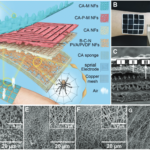
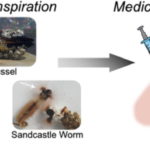

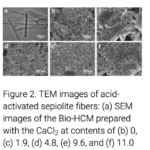
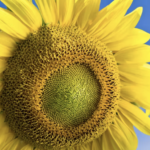

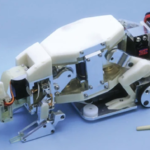
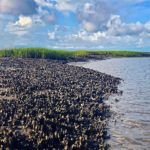
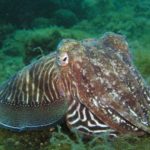
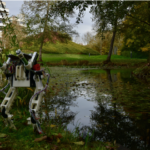

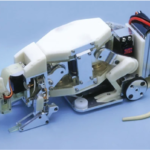

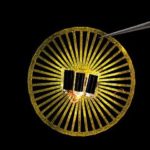
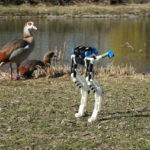

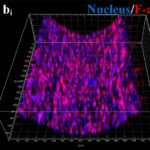



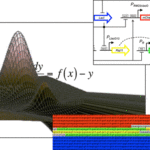

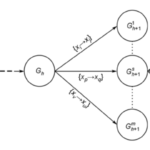


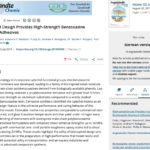


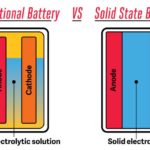
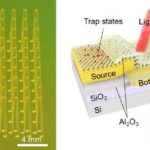

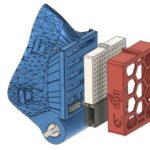
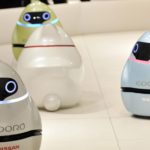


I imagine that the neurological circuits underlying these processes are governed by both 2d spacing maps with their brains as…
to reduce the impact of car accidents, it may be possible to study the force diverting physics of cockroaches to…
you see this type of head-bobbing stability in many avian creatures related to pigeons like chickens. the head ability to…
not like they taught horses how to run! this is an example of convergent evolution where both sea creatures and…
The brain functions in a similar way with neuronal connections. our brains are able to utilize the multiplicity of connections…